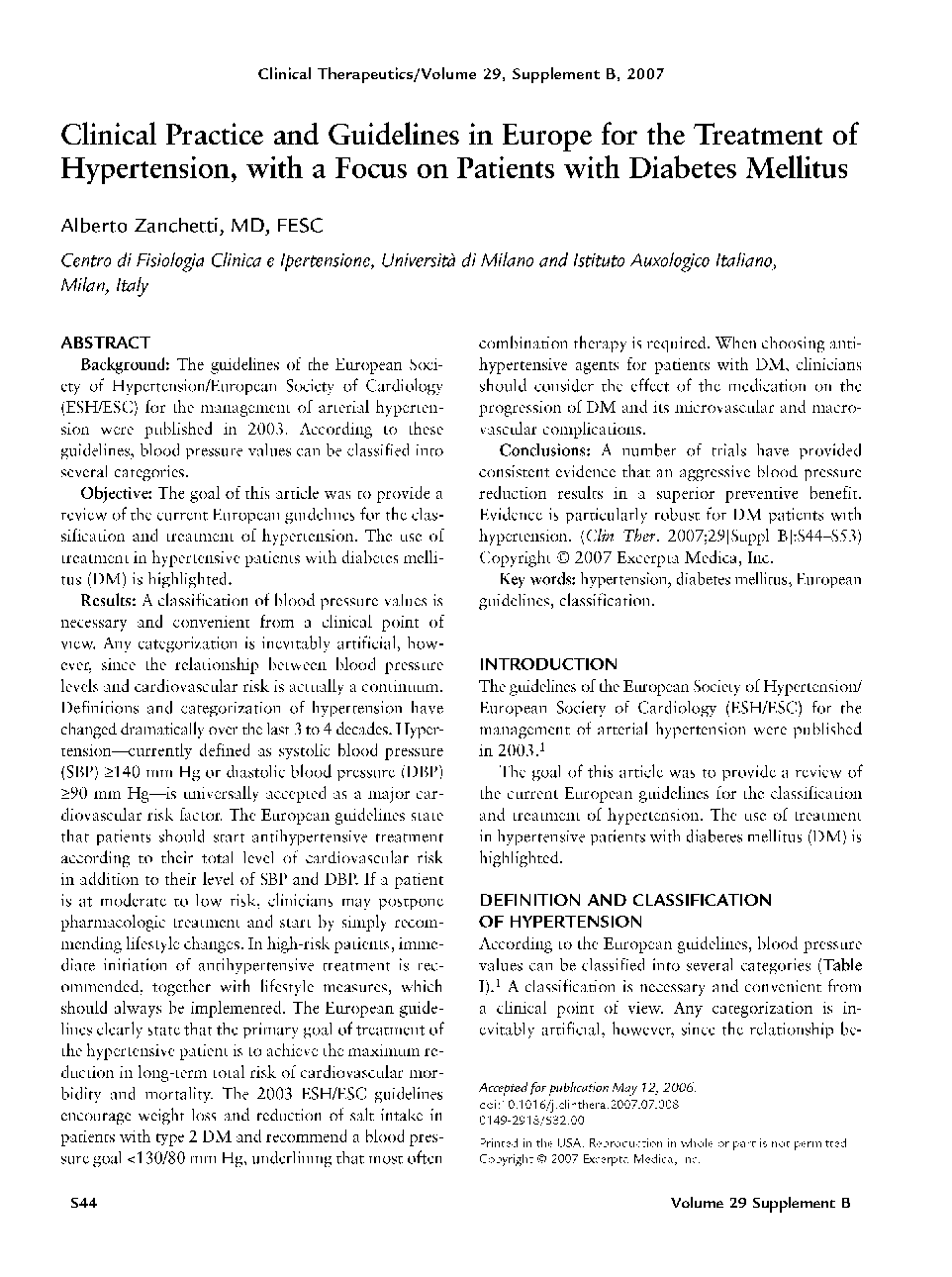| Article ID | Journal | Published Year | Pages | File Type |
|---|---|---|---|---|
| 2529410 | Clinical Therapeutics | 2007 | 10 Pages |
Background: The guidelines of the European Society of Hypertension/European Society of Cardiology (ESH/ESC) for the management of arterial hypertension were published in 2003. According to these guidelines, blood pressure values can be classified into several categories.Objective: The goal of this article was to provide a review of the current European guidelines for the classification and treatment of hypertension. The use of treatment in hypertensive patients with diabetes mellitus (DM) is highlighted.Results: A classification of blood pressure values is necessary and convenient from a clinical point of view. Any categorization is inevitably artificial, however, since the relationship between blood pressure levels and cardiovascular risk is actually a continuum. Definitions and categorization of hypertension have changed dramatically over the last 3 to 4 decades. Hypertension--currently defined as systolic blood pressure (SBP) >140 mm Hg or diastolic blood pressure (DBP) >90 mm Hg--is universally accepted as a major cardiovascular risk factor. The European guidelines state that patients should start antihypertensive treatment according to their total level of cardiovascular risk in addition to their level of SBP and DBE If a patient is at moderate to low risk, clinicians may postpone pharmacologic treatment and start by simply recommending lifestyle changes. In high-risk patients, immediate initiation of antihypertensive treatment is recommended, together with lifestyle measures, which should always be implemented. The European guidelines clearly state that the primary goal of treatment of the hypertensive patient is to achieve the maximum reduction in long-term total risk of cardiovascular morbidity and mortality. The 2003 ESH/ESC guidelines encourage weight loss and reduction of salt intake in patients with type 2 DM and recommend a blood pressure goal <130/80 mm Hg, underlining that most often combination therapy is required. When choosing antihypertensive agents for patients with DM, clinicians should consider the effect of the medication on the progression of DM and its microvascular and macrovascular complications.Conclusions: A number of trials have provided consistent evidence that an aggressive blood pressure reduction results in a superior preventive benefit. Evidence is particularly robust for DM patients with hypertension.
